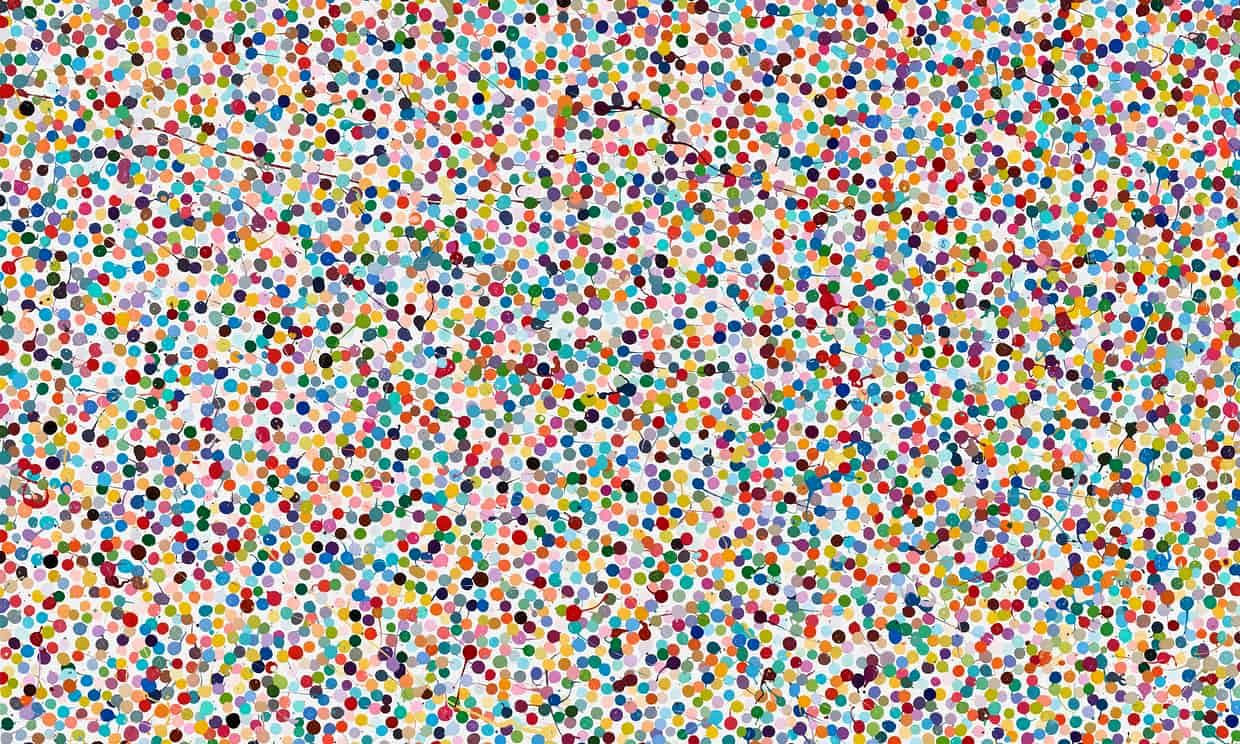Damien Hirst to show new spot paintings at 18th-century mansion

IranArt - Exhibition of Colour Space paintings will open in March in the gilded state rooms of Houghton Hall in Norfolk.
Damien Hirst is to take over the spectacular gilded state rooms of Britain’s finest Palladian mansion to show a new series of his long-running spot paintings.
According to The Guardian, The Colour Space works, two of which can be seen here for the first time, will be shown at Houghton Hall in Norfolk, built in the 18th century for Britain’s first prime minister, Sir Robert Walpole, and which once housed one of the world’s greatest art collections.
The exhibition, opening in March, is another example of Hirst never doing anything by halves. In 2012 he took over all 11 Gagosian galleries around the world for his spot paintings, and last year his monumental fantasy exhibition Treasures from the Wreck of the Unbelievable filled two grand Venice palaces.
Houghton was built with an art collection in mind, and it is this history that is striking. Walpole amassed a stupendous collection, the finest in the land, with works by artists including Rembrandt, Poussin, Van Dyck and Velázquez. In 1779, 34 years after Walpole’s death, the profligacy of his grandson led to the collection being sold to the highest bidder, bought as a job lot by Catherine the Great for the then vast sum of £40,555.
Hirst will show about 50 of his new paintings in Houghton’s state rooms, and some of his most recognisable sculptures will be installed in the gardens. The paintings are a development of his spot paintings which, along with his animals preserved in formaldehyde and his spin paintings, are among Hirst’s most recognisable works.
The show’s curator, Mario Codognato, said the works, were a looser, more organic response to the spot paintings. “They are literally going to replace Old Master paintings [at Houghton] and will be displayed like they are Old Master paintings, in a very different way than if it was a classic white cube gallery.”
He said there would be a contrast between the historical splendour of the rooms and the works, but visitors would also see “how classic and iconic” the Hirst images had become. “It is an absolutely amazing space and is a very interesting experiment for Damien to show in such a context.”
Houghton’s owner, Lord Cholmondeley, said he was delighted to have the opportunity to exhibit Hirst. “It is perhaps the first time that Hirst has shown a significant body of work in a formal country house setting. William Kent’s gilded interiors will be transformed for the duration of the show.”
With their deliberately machine-like uniformity, the spot paintings are derided by some critics and celebrated by others. The Guardian’s Adrian Searle once called them “as unsatisfying as cigarettes, calming but addictive.”
One estimate is that there are more than 1,400 in existence, almost all of them produced factory-style over the past 30 years by the artist’s teams of assistants. In 2011 a grand scale spot work was begun in Hirst’s studios that will comprise a million 0.5mm spots. It will take nine and a half years to complete.
The exhibition coincides with the beginning of a new series of books, published by Heni, documenting the complete works of Hirst. First up is Colour Space, which contains an introductory essay by Ann Gallagher, the director of British art collections at Tate. She writes that the spot paintings “were conceived from the outset as an endless series”.
In contrast, the Colour Space paintings have been conceived as a finite series with rigorous rules. In total there will be 4 million spots painted in household gloss, with the largest painting containing 90,000 spots. On 250 canvasses there will be spots sized at 6mm, 10mm, 25mm, 50mm, 75mm and 100mm. There will also be a triptych and 12 canvases on a black background.
The works have been produced at Hirst’s three studios in Devon, London and Gloucestershire, with each of his hired painters averaging 1,500 spots a day.

